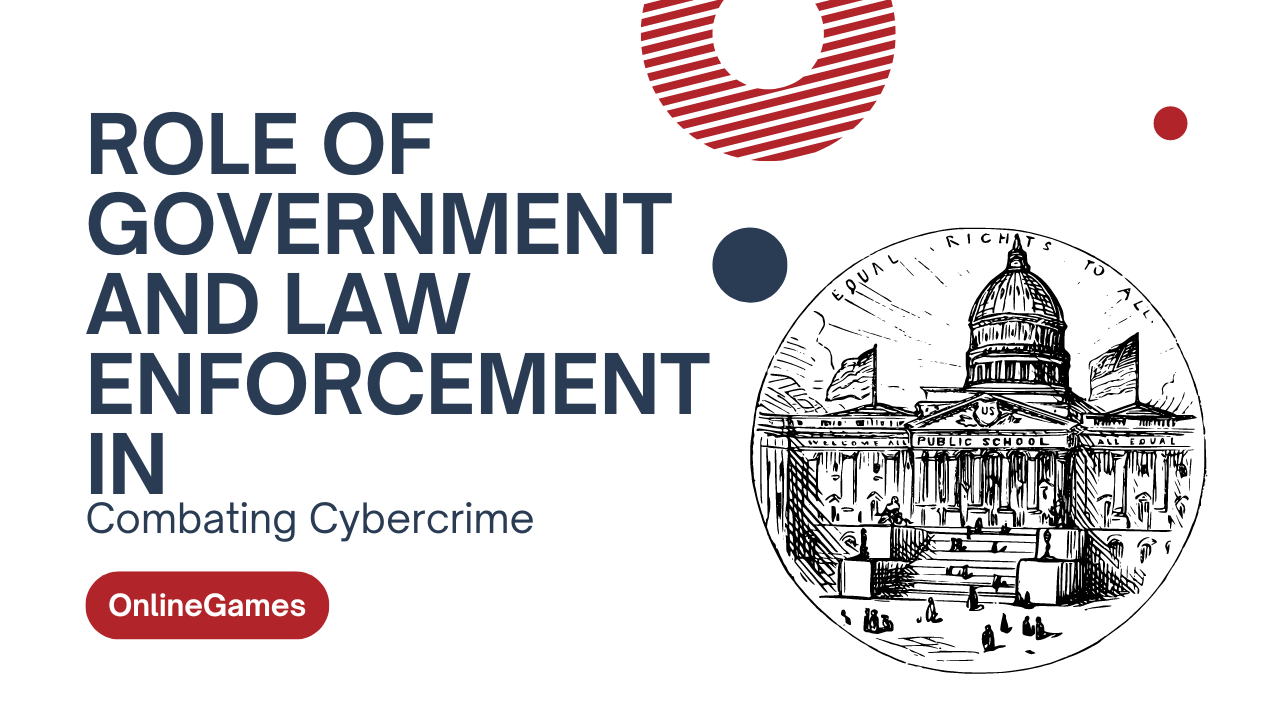Cybercrime encompasses a range of illicit activities conducted through digital means, posing significant challenges to cybersecurity and public safety globally. Governments and law enforcement agencies play a pivotal role in combating cyber threats, safeguarding critical infrastructure, and upholding legal standards in the digital domain. This guide explores the multifaceted nature of cybercrime, the strategies employed by governments and law enforcement, international cooperation efforts, and the evolving landscape of cyber threats.
Understanding Cybercrime
Types of Cybercrime
Cybercrime encompasses various malicious activities:
- Financial Fraud: Scams, phishing, and identity theft aimed at financial gain.
- Cyber Espionage: Theft of sensitive information for political, economic, or strategic advantage.
- Ransomware Attacks: Malware that encrypts data and demands ransom for decryption.
- Data Breaches: Unauthorized access to sensitive data, resulting in exposure or theft.
- Cyber Terrorism: Coordinated attacks targeting critical infrastructure or causing public disruption.
- Online Extortion: Blackmail or coercion through digital platforms for financial extortion.
Motivations Behind Cybercrime
Motivations for cybercrime include:
- Financial Gain: Criminals seek monetary rewards through fraud, extortion, or illicit transactions.
- Political or Ideological Motives: State-sponsored actors or hacktivists target governments, organizations, or individuals for political or ideological reasons.
- Competitive Advantage: Corporate espionage or intellectual property theft aimed at gaining a competitive edge.
- Disruption or Chaos: Cyber terrorists or malicious actors disrupt services, infrastructure, or societal norms for ideological or anarchic purposes.
Government Initiatives and Responsibilities
Policy Development
Governments formulate policies to address cyber threats:
- National Cybersecurity Strategies: Frameworks outlining objectives, priorities, and resources for cybersecurity efforts.
- Regulatory Measures: Laws and regulations governing data protection, cybercrime prevention, and incident response.
- Cyber Incident Reporting: Requirements for organizations to report cybersecurity incidents to relevant authorities.
Legislation and Legal Frameworks
Legal frameworks support cybercrime prosecution:
- Cybercrime Laws: Statutes defining cyber offences, penalties, and jurisdictional boundaries.
- Data Protection Regulations: Laws safeguarding personal data and privacy rights.
- Extradition Treaties: Agreements facilitating the extradition of cybercriminals across international borders.
Law Enforcement Agencies
Specialized units combat cyber threats:
- Cybercrime Units: Dedicated teams within law enforcement agencies focused on investigating cyber incidents.
- Digital Forensics Teams: Experts in retrieving and analyzing digital evidence for criminal investigations.
- Public Awareness Campaigns: Educational initiatives raising awareness about cyber threats, prevention tips, and reporting procedures.
International Cooperation
Global Cybersecurity Initiatives
Collaborative efforts enhance cybersecurity capabilities:
- Interpol Cybercrime Programme: Facilitates cooperation among law enforcement agencies worldwide to combat cyber threats.
- Europol Cybercrime Centre (EC3): Coordinates intelligence sharing and operational support across European Union member states.
- UN Office on Drugs and Crime (UNODC): Promotes international cooperation in combating cybercrime through capacity-building and technical assistance.
Mutual Legal Assistance Treaties (MLATs)
MLATs facilitate cross-border cooperation:
- Evidence Sharing: Enables the exchange of information and evidence between countries for criminal investigations.
- Extradition Requests: Streamlines processes for requesting extradition of cybercriminal suspects to face trial in the requesting jurisdiction.
Challenges in International Collaboration
Barriers to effective international cooperation include:
- Jurisdictional Issues: Conflicting laws and regulations across jurisdictions complicate cross-border investigations.
- Cultural and Language Differences: Variations in legal practices, languages, and cultural norms hinder communication and cooperation.
- Resource Constraints: Disparities in cybersecurity capabilities and resources among countries affect collaborative efforts.
Cybersecurity Challenges and Responses
Emerging Threats
Technological advancements pose new challenges:
- AI-Powered Attacks: Malicious use of artificial intelligence and machine learning for automated cyber-attacks.
- IoT Vulnerabilities: Insecure Internet of Things (IoT) devices susceptible to exploitation in botnet attacks.
- Supply Chain Risks: Vulnerabilities in supply chain networks exploited for cyber espionage or sabotage.
Technological Advancements
Innovations enhance cybersecurity capabilities:
- Big Data Analytics: Utilization of data analytics for threat detection and predictive analysis.
- Blockchain Technology: Decentralized ledger systems for secure transactions and data integrity verification.
- Quantum Computing: Potential for quantum-resistant encryption algorithms to mitigate future cybersecurity risks.
Public-Private Partnerships
Collaboration between government entities and private sector stakeholders:
- Information Sharing: Sharing threat intelligence and cybersecurity best practices between public and private sectors.
- Joint Initiatives: Collaborative projects to enhance cybersecurity resilience, develop standards, and promote regulatory compliance.
- Sector-Specific Alliances: Industry-specific partnerships addressing cybersecurity challenges and regulatory requirements.
Legal and Ethical Considerations
Privacy Concerns
Balancing security measures with privacy rights:
- Data Protection Laws: Regulations ensuring the lawful and ethical handling of personal data.
- Privacy by Design: Incorporating privacy considerations into the design of systems and services to minimize data exposure.
Surveillance and Civil Liberties
Ethical considerations in cybersecurity operations:
- Civil Liberties: Protecting individual rights and freedoms while combating cyber threats.
- Transparency: Accountability in surveillance practices and adherence to legal standards.
Future Directions and Innovations
Cybercrime Intelligence
Advancements in intelligence gathering and analysis:
- Predictive Analytics: Forecasting cyber threats based on historical data and emerging trends.
- Cyber Threat Hunting: Proactive identification and mitigation of potential cyber threats before they materialize.
Artificial Intelligence in Law Enforcement
AI applications in enhancing cybersecurity capabilities:
- Automated Threat Detection: AI algorithms for real-time detection and response to cyber incidents.
- Behavioural Analysis: Analyzing patterns in user behaviour to identify anomalies indicative of cyber threats.
The role of government and law enforcement in combating cybercrime is essential in safeguarding national security, protecting critical infrastructure, and upholding legal standards in the digital era. Through policy development, legislative frameworks, specialized law enforcement units, and international cooperation initiatives, governments enhance cybersecurity resilience and mitigate the impact of cyber threats on individuals, businesses, and society. However, challenges such as jurisdictional complexities, emerging technological threats, and privacy considerations require ongoing collaboration, innovation, and adaptation of strategies to effectively combat cybercrime. By fostering partnerships, leveraging technological advancements, and prioritizing cybersecurity awareness and preparedness, governments can strengthen their defences against cyber threats and promote a safer digital environment for all






